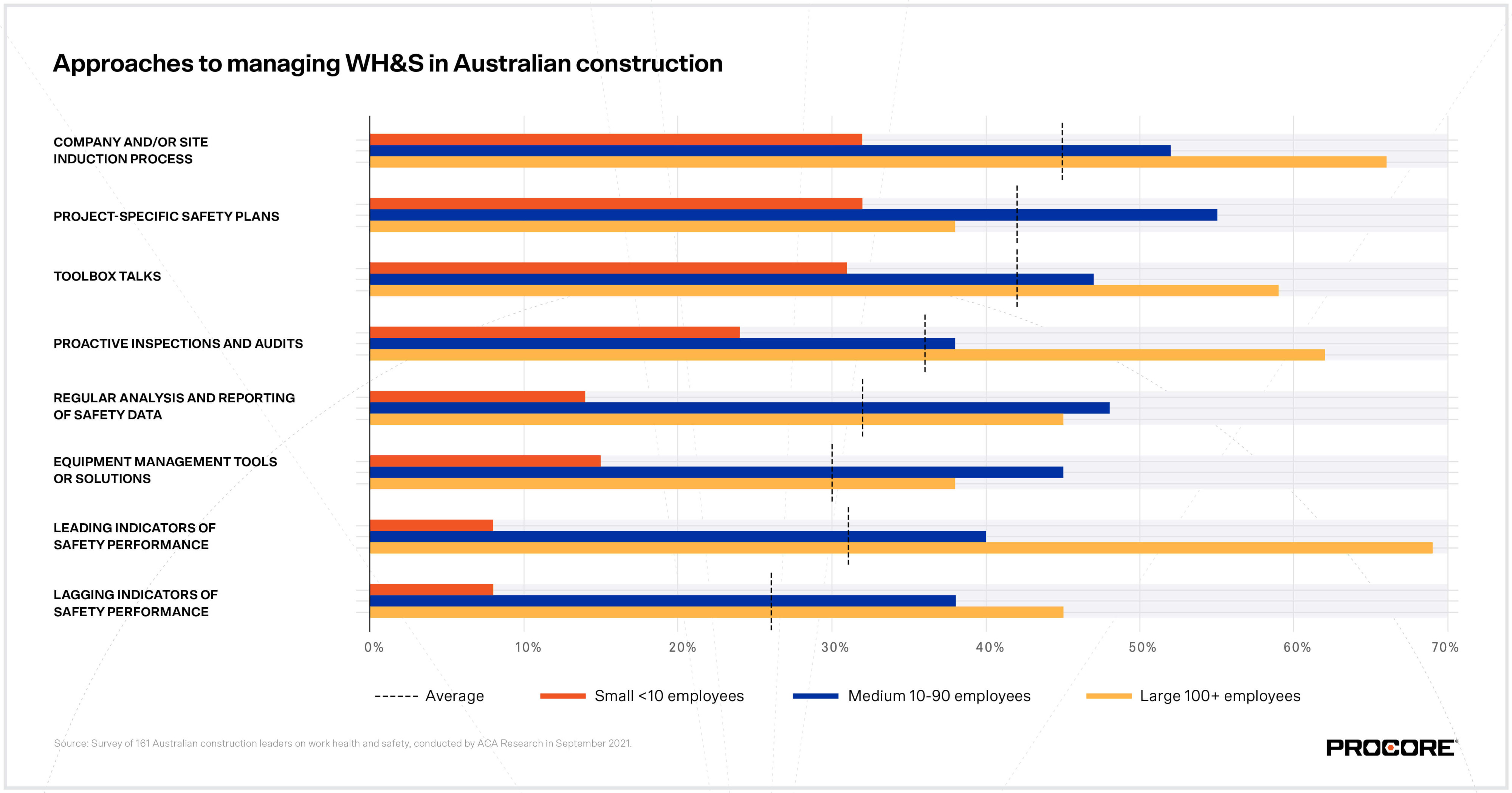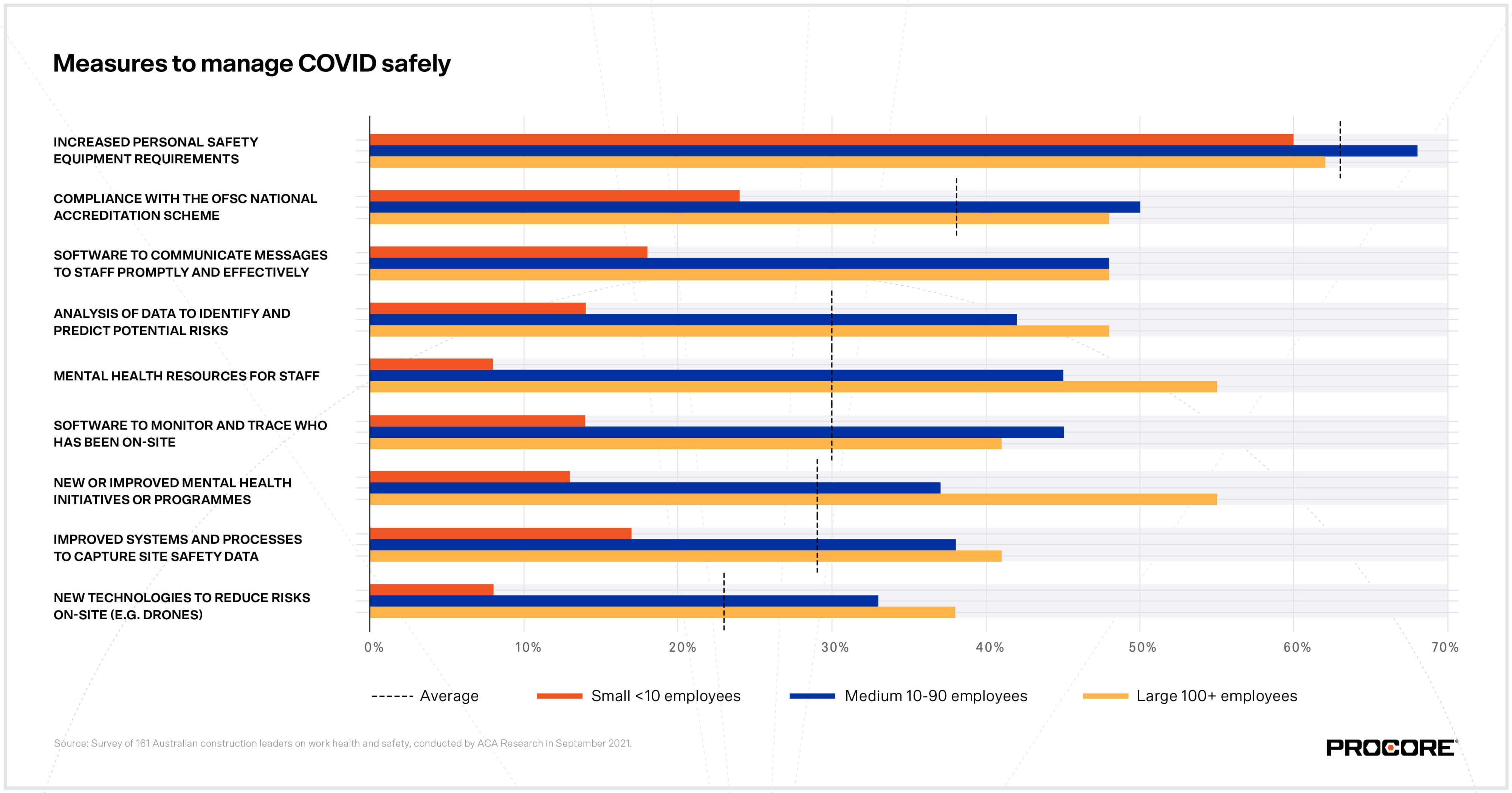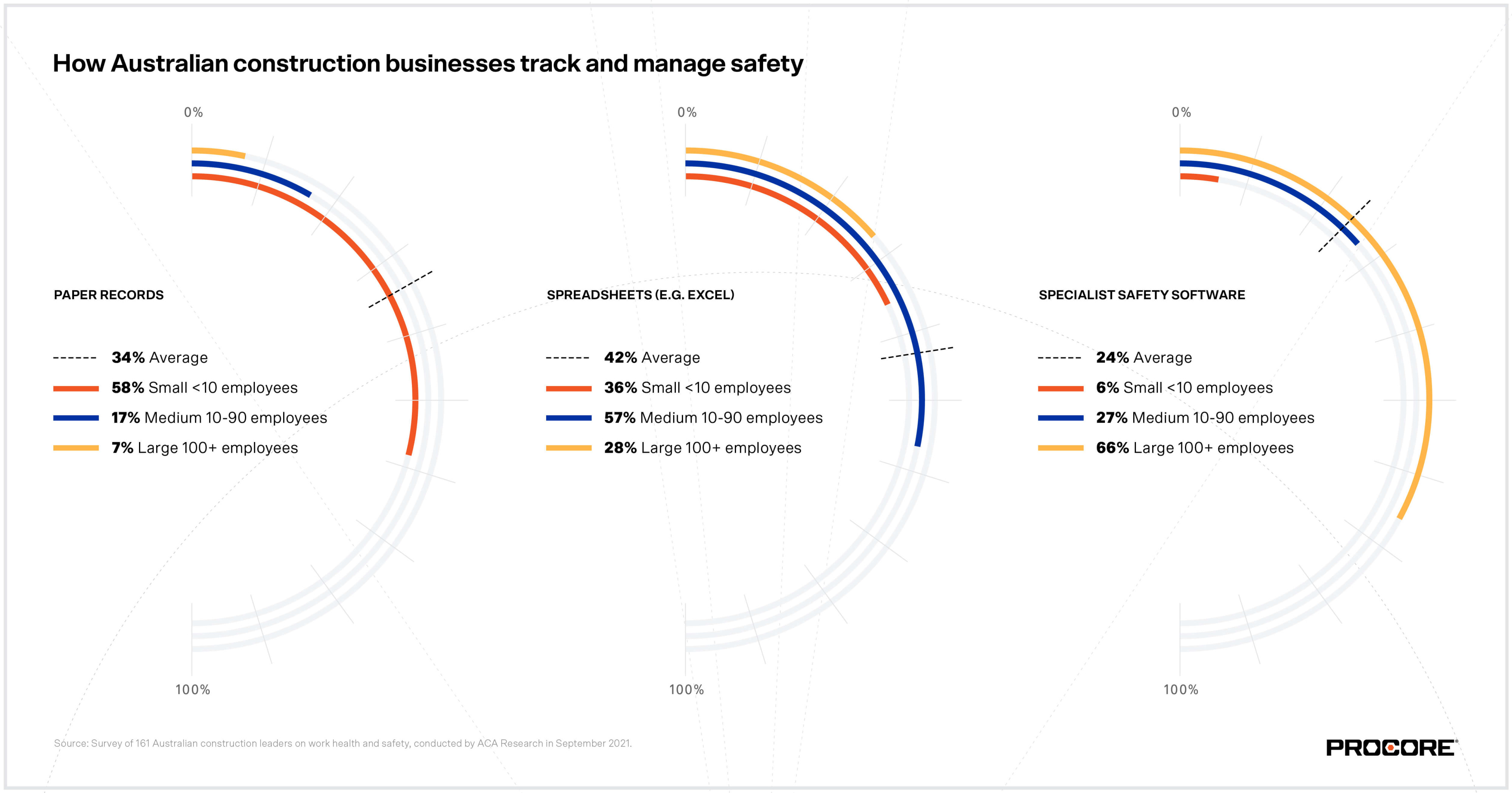New research highlights need to re-prioritise safety and wellbeing in the Australian Construction Industry
Procore poll reveals low rates of safety training and mental health initiatives, opportunity to leverage technology and data to improve WH&S
SYDNEY, Australia – 19 October 2021 – Procore Technologies, Inc., (NYSE: PCOR), a leading provider of construction management software, has released new industry research revealing low rates of safety training and mental health initiatives within Australian construction organisations. The survey also showed that larger businesses (100+ employees) are more likely to be using specialist software, data and leading indicators to manage safety, with room for smaller companies to increase technology use.

Conducted by ACA Research on behalf of Procore, the survey of 161 construction leaders across Australia found that, while work health and safety (WH&S) issues are most commonly attributed to the actions of individual workers, less than half of the businesses surveyed conduct safety training at key moments or regular intervals. Meanwhile, at a time of heightened stress and pressure on the construction industry, just 36% of local construction businesses have a mental health strategy in place.
Disrupted industry needs renewed focus on safety
2021 has been a disruptive year for the construction industry, with not only the pandemic to contend with, but also new building reforms driving a focus on quality assurance in New South Wales and prolonged restrictions and instability leading to heightened tension and protests in Victoria. It is perhaps unsurprising then, that safety and wellbeing has slipped down the priority list. Project viability exceeds safety for more than a quarter of respondents, with 30% saying budget and 26% saying time considerations are more important.
However, it is encouraging to see 75% of respondents agree that achieving an accident-free workplace is still one of their top priorities. Initiatives such as the Construction Industry Culture Task force are driving renewed focus on improving safety and wellbeing outcomes for construction workers. Procore is committed to improving safety and mental health for construction workers across the globe with education, training and access to technology through Procore.org.
Frances Khattar, HSE Manager at Mono Constructions, winner of Procore’s Groundbreaker Award for Safety, comments, “At Mono Constructions, our people are the most important asset to our organisation. We have a responsibility to prioritise the care of our people to ensure they get to go home safe to their loved ones each day. Safety is one of the six success criteria we use to measure ourselves against, across all our projects and position descriptions. Investing in the right safety systems and procedures has helped Mono achieve greater visibility and awareness of safety and wellbeing across the business.”
Measures to manage COVID safely
We saw a greater focus on COVID-19 safety measures during the early stages of the pandemic, with initiatives declining in 2021. This is likely due to state governments introducing standardised systems and processes, such as QR code check-in apps for contact tracing.
Of all measures, construction companies are most likely to have increased personal safety equipment requirements (63%, down from 70% in 2020).
30% of organisations have introduced software that assists with contact tracing, improved systems to capture and analyse site safety data and identify risks, and new mental health resources and initiatives.
Medium (10-99 employees) and large businesses are more effectively using technology to manage COVID-19, with 48% using software to better communicate with staff.

Larger businesses lead on mental health
As mental health concerns increased across all industries during the pandemic, large construction companies are more likely to have implemented new or improved mental health initiatives, programs and resources (55% compared with 30% on average).
Large businesses are also more likely to have strategies for other elements of mental health, such as stress management (52% compared with 34%) and working time reduction (38% compared with 28%).
Medium companies are considering a range of mental health policies, but are less likely to have taken action.
Less than 20% of small businesses (10 employees) have any mental health initiatives in place.

WH&S policies, incidents and training
Australia continues to set a high bar for construction site safety, however, the frequency of WH&S training leaves room for improvement.

71% currently have a workplace health and safety policy in place, with 88% of those companies updating their policies at least every 2 years.
72% agree that WH&S needs to be an integral part of everyone’s job.
Respondents cited lack of care (74%) and unnecessary risks being taken by the worker (71%) as the highest contributing factors to WH&S incidents.
Organisations conduct WH&S training intermittently and inconsistently, with some opting for regular sessions (47%), and others offering refresher courses after an incident (21%).

Data-driven safety
Large businesses are more likely to see safety as a shared responsibility between the business and the worker, recognising a wider range of factors that contribute to incidents. This is also reflected in large businesses’ approach to managing WH&S, leveraging more sophisticated technology and processes for a better understanding of risk and safety on site.
66% of large businesses use specialist safety software, compared with 24% on average.
Medium businesses are more likely to use spreadsheets (57%) while small businesses are more likely to manage safety on paper (58%).
69% of large businesses use leading indicators of safety performance, compared with 31% on average.
62% of large businesses conduct proactive inspections and audits, compared with 36% on average.

Tom Karemacher, Vice President, APAC at Procore comments, “The construction industry has resiliently adapted to the challenges and changes that have been thrown its way in recent times. As businesses strive to complete projects on time, on budget and to a high level of quality, safety must continue to be prioritised. We encourage smaller organisations to follow the lead of their larger counterparts, and invest in policies and technologies that help them better identify and manage risk, and support the health and mental wellbeing of their most important asset–their people.”
Find out more about Procore Quality & Safety
About ProcoreProcore is a leading provider of construction management software. Over 1 million projects and more than $1 trillion USD in construction volume have run on Procore’s platform. Our platform connects every project stakeholder to solutions we've built specifically for the construction industry—for the owner, the head contractor, and the subcontractor. Procore’s App Marketplace has a multitude of partner solutions that integrate seamlessly with our platform, giving construction professionals the freedom to connect with what works best for them. Headquartered in Carpinteria, California, Procore has offices around the globe. Learn more at Procore.com.